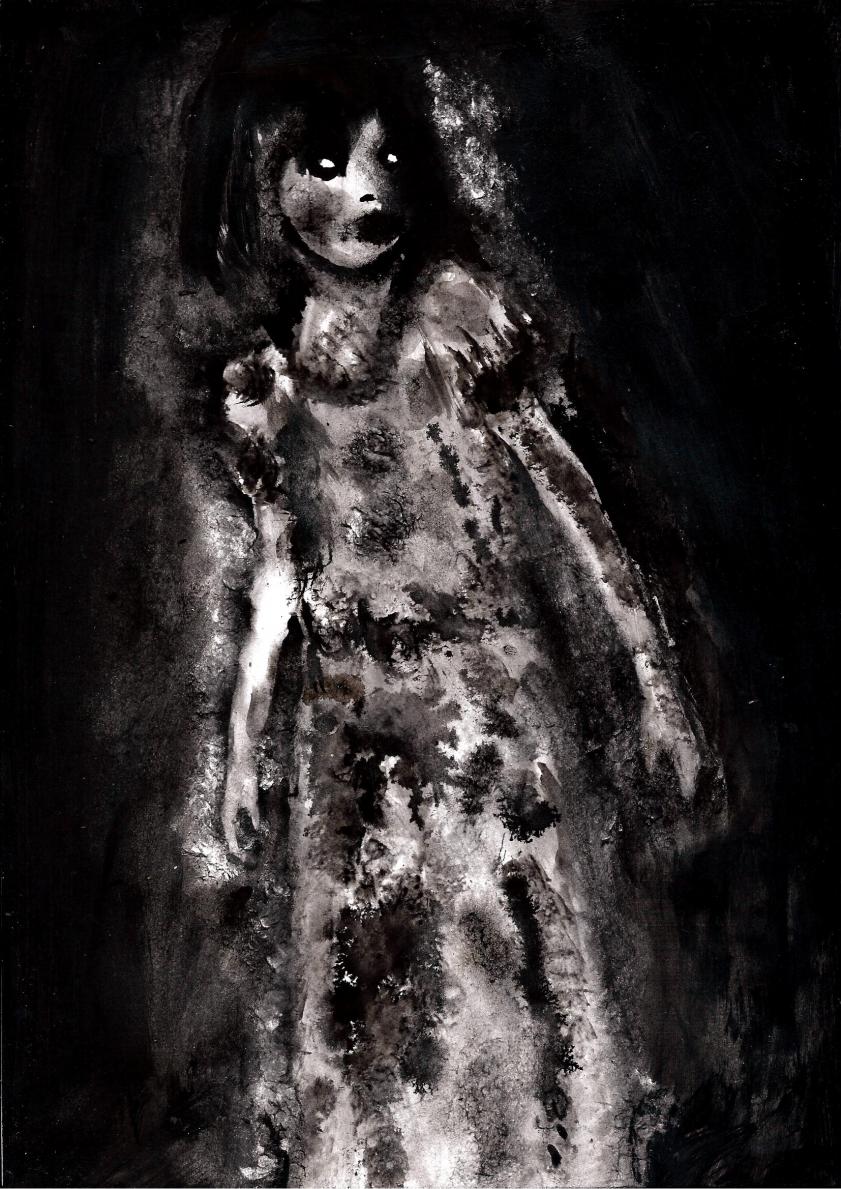Details
- 2013-01-14
- 0
- 58
- 2013
- Painting
- Ink
- Horror
Pricing
Price and availability not indicated

- URBAN LEGEND -
Description by Mister 13
Ink, brush and kleenex on cardboard, too much coffee and around 4-9 cigarette. An urban legend, urban myth, urban tale, or contemporary legend, is a form of modern folklore consisting of stories that may or may not have been believed by their tellers to be true. As with all folklore and mythology, the designation suggests nothing about the story's veracity, but merely that it is in circulation, exhibits variation over time, and carries some significance that motivates the community in preserving and propagating it. Despite its name, an urban legend does not necessarily originate in an urban area. Rather, the term is used to differentiate modern legend from traditional folklore in pre-industrial times. For this reason, sociologists and folklorists prefer the term contemporary legend. The term “urban legend,” as used by folklorists, has appeared in print since at least 1968.Jan Harold Brunvand, professor of English at the University of Utah, introduced the term to the general public in a series of popular books published beginning in 1981. Brunvand used his collection of legends, The Vanishing Hitchhiker: American Urban Legends & Their Meanings (1981) to make two points: first, that legends and folklore do not occur exclusively in so-called primitive or traditional societies, and second, that one could learn much about urban and modern culture by studying such tales. Urban legends are sometimes repeated in news stories and, in recent years, distributed by e-mail. People frequently allege that such tales happened to a "friend of a friend"; so often, in fact, that "friend of a friend" ("FOAF") has become a commonly used term when recounting this type of story. Some urban legends have passed through the years with only minor changes to suit regional variations. One example is the story of a woman killed by spiders nesting in her elaborate hairdo. More recent legends tend to reflect modern circumstances, like the story of people ambushed, anesthetized, and waking up minus one kidney, which was surgically removed for transplantation (a story which folklorists refer to as "The Kidney Heist"). Many urban legends are essentially extended jokes, told as if they were true events. Urban legends typically include one or more common elements: the legend is retold on behalf of the original witness or participant; dire warnings are often given for those who might not heed the advice or lesson contained therein (this is a typical element of many e-mail phishing scams); and it is often touted as "something a friend told me," while the friend is identified by first name only or not identified at all. One of the classic hallmarks of false urban legends is a lack of specific information regarding the incident, such as names, dates, locations, or similar information. Urban legends are also good indicators of what's going on in current society, By looking at what's implied in a story, we get an insight into the fears of a group in society, a need to make cultural sense. It's a lack of information coupled with these fears that tends to give rise to new legend. When demand exceeds supply, people will fill in the gaps with their own information…they'll just make it up. But urban legends aren't all serious life lessons and conspiracy theories, experts say, with the scariest, most plausible ones often framed as funny stories. Those stories can spread like wildfire in today's Internet world, but they've been part of human culture as long as there has been culture. That legends should be around as long as there are inexplicable curiosities in life. "Life is so much more interesting with monsters in it" Mike J. Koven







